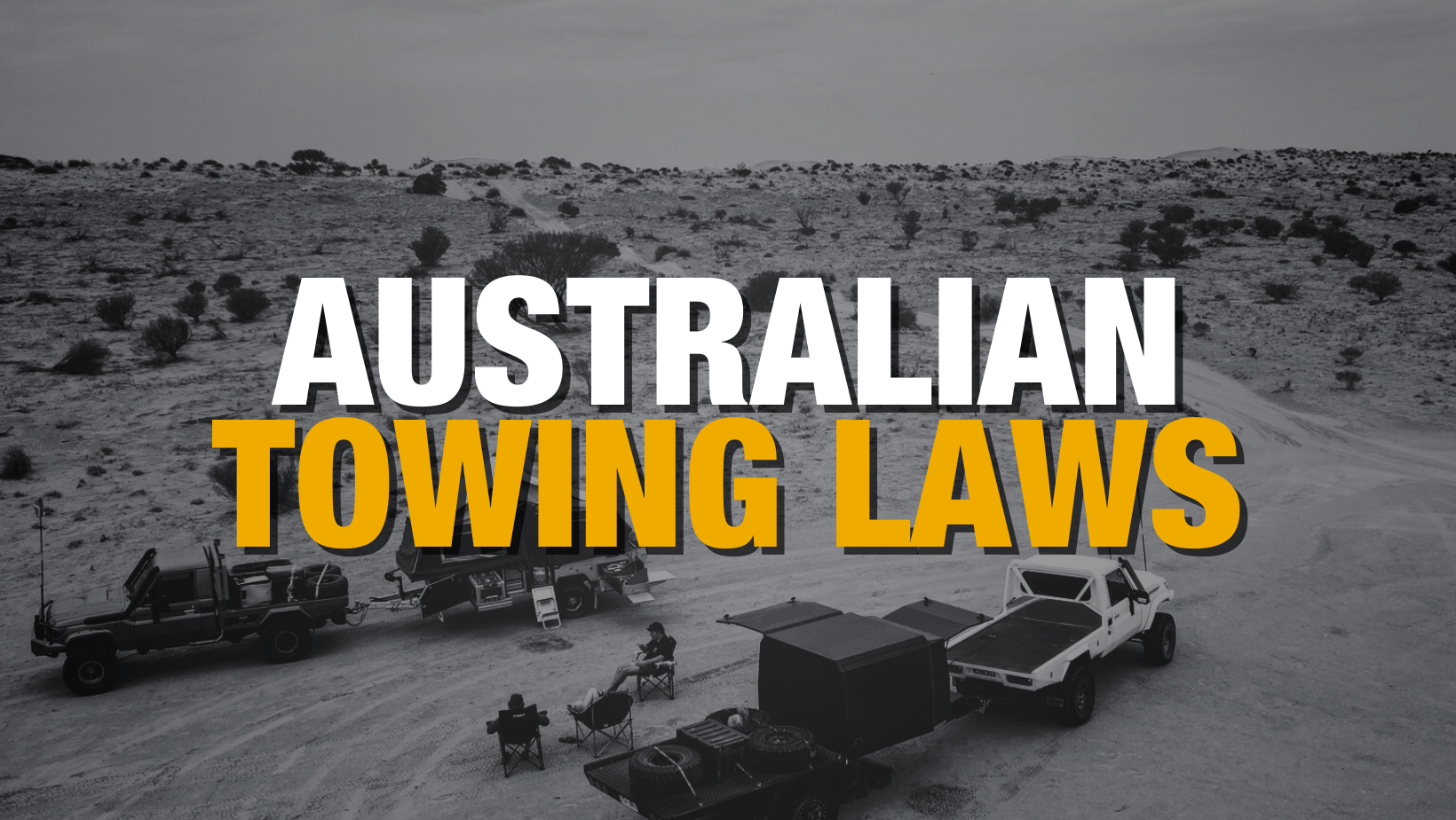As a trailer owner or manufacturer, it’s important that you adhere to the required safety standards and regulations in Australia.
The Australian Design Rules (ADR) are a set of rulings that reference the applicable Australian Standard to which equipment integral to or auxiliary to the design of a road vehicle must adhere.
In this blog post, we’ve gathered relevant ADR and towing regulation material for trailers in Australia to help you understand your responsibilities for compliance with the Australian Design Ruling and indeed the Australian Standards applicable to safe towing on our roads.
We’ve highlighted some of the most significant ones, ADR 38, 42, 43, and 62, which cover critical areas like trailer brake systems, general safety requirements, vehicle dimensions, and mechanical connections between vehicles.
ADR 38 | Trailer Brake Systems
Link to the Federal Register of Legislation: https://www.legislation.gov.au/Details/F2006L03060
Here are some important points covered in ADR 38:
- Service Brake: Specifies that a trailer must have a service brake system that is independent of the tow vehicle’s brakes. The service brake must be able to stop the trailer within a certain distance and must be activated by a control in the tow vehicle. Service brakes must be installed on all trailer-type road vehicles above 750kg.
- Emergency Brake: Requires trailers in Australia to have an emergency brake system that can stop the trailer in the event of detachment from the tow vehicle. The emergency brake must activate automatically when the trailer becomes seperates from the tow vehicle.
- Parking Brake: Specifies that trailers must have a parking brake system that can hold the trailer stationary when parked and held in situ without any further ‘control’ or operation. The parking brake can use those brake which are installed on the axle or axle group of the trailer, however must have a separate and independent system or mechanism of engagement/disengagement from that of the service brakes.
ADR 42 | General Safety Requirements
Link to the Federal Register of Legislation: https://www.legislation.gov.au/Details/F2006L03251
Here are some important points covered in ADR 42:
- Rims: the maximum load rating for a rim must be marked on the rim or supplied with documentation, and the rim must meet certain the load rating, which constitutes a series of alpha numeric codes implies the type and capacity of the rim. This nomenclature is also used to describe the performance characteristics of the tyre.
- Mudguards: the width and height of wheel guards must cover the width and height of the tire and prevent debris from being thrown towards other vehicles. ADR42 specifies an angle to the radial plane of the wheel which both the front and rear of the mudguard must demonstrate to adhere to this ruling.
- Electrical Connections: trailer electrical systems must comply with certain requirements for voltage, current, insulation, and wiring.
The General Safety Requirements also touch on topics such as wiring, ventilation, and lighting.
ADR 43 | Vehicle Configuration & Dimensions
Link to the Federal Register of Legislation: https://www.legislation.gov.au/Series/F2006L02743
Covering vehicle configuration and dimensions, ADR 43 includes:
- Maximum dimensions and weights for Australian trailers, including length, height, and width.
- Required markings and labels for trailers.
- Minimum distance between the front of the trailer and the rear of the towing vehicle.
- Allowed axle configurations and axle weights.
- Requirements for suspension systems, including types of springs and shock absorbers.
- Maximum overhang for loads on the rear of the trailer.
ADR 62 | Mechanical Connections Between Vehicles
Link to the Federal Register of Legislation: https://www.legislation.gov.au/Series/F2006L03054
Important points covered in ADR 62, of which include:
- Couplings must meet the minimum strength requirements specified in the standard.
- Drawbars must be constructed from a suitable material and be of sufficient strength to handle the load.
- Safety chains must be used when towing and meet the strength requirements outlined in the standard.
- The trailer’s mass must be less than or equal to the towing vehicle’s specified maximum towing mass.
- The towbar and its components must be of sufficient strength and size to handle the load.
- The coupling should be properly installed, maintained, and adjusted to ensure safe towing.
- If using an automatic coupler, it must have a positive locking mechanism.
- The breakaway cable or chain must be attached correctly to the towing vehicle and the trailer.
- Trailers in Australia must not be overloaded beyond their maximum capacity.
- The tow vehicle and trailer must be compatible with each other in terms of weight distribution and braking capacity.
Other Resources and Industry Bodies
Understanding regulations and towing compliance factors is important for trailer safety.
Industry bodies like the National Heavy Vehicle Regulator (NHVR) and Australian Road Rules (ARR) can provide further insight into towing regulations.
Another aspect of towing in Australia is Component Type Approvals (CTAs). Couplemate has covered in another dedicated article available here. The CIAA has also created a valuable visual aid that breaks down which components come under each ADR. This is available here.
In conclusion, compliance with ADR and towing regulation material is critical to ensure trailer safety in Australia.
By understanding the technical requirements and compliance procedures, trailer owners and manufacturers can ensure that their trailers meet the necessary safety standards.
Looking for more information?
Contact the Department of Infrastructure, Transport & Vehicles.
Ph. 1800 075 001

0 Comments